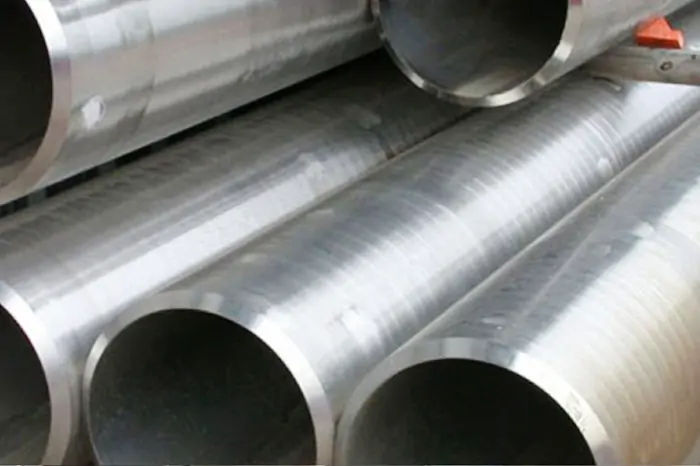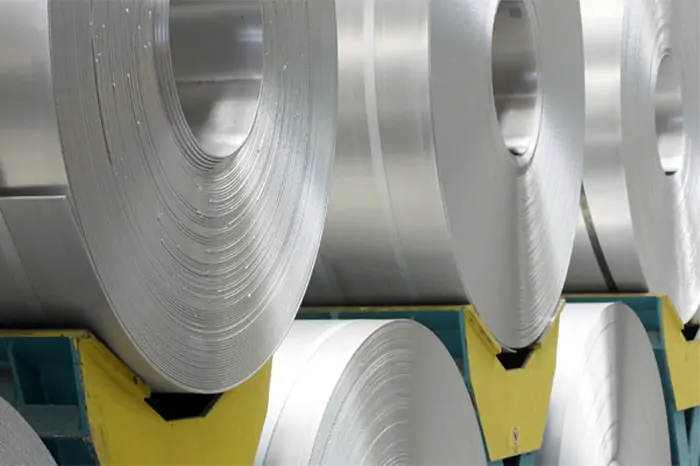Soft magnetic materials play a crucial role in a wide array of technological applications, including transformer cores, inductors, and various electromagnetic devices. Their unique characteristics make them indispensable in managing and manipulating magnetic fields effectively. From consumer electronics to industrial machinery, these materials are at the heart of many systems that require efficient energy management. In this article, we will explore the key properties of soft magnetic materials, their significance in modern technology, and their diverse applications across different sectors.
Table of Contents
ToggleSoft magnetic materials are renowned for their ability to be easily magnetized and demagnetized, setting them apart from their hard magnetic counterparts. Unlike hard magnetic materials, which maintain their magnetism over time, soft magnetic materials are ideal when a temporary magnetic field is desired. This temporary nature makes them suitable for applications that require quick and efficient magnetic response, such as in alternating current (AC) devices. Their ability to rapidly adjust to changing magnetic fields is what makes them so effective in dynamic environments.
High Magnetic Susceptibility
A defining characteristic of soft magnetic materials is their high magnetic susceptibility, which allows them to become magnetized in the presence of a magnetic field with minimal effort. This property is essential in applications where rapid and efficient changes in magnetization are crucial, such as in transformers and inductors. The high magnetic susceptibility ensures that these materials can quickly respond to external magnetic fields, thereby optimizing the performance of devices that rely on swift magnetic transitions.
High magnetic susceptibility also contributes to the sensitivity of devices, allowing for precise control over magnetic fields. This is particularly important in applications that require fine-tuned magnetic responses, such as in medical imaging equipment or precision sensors. By selecting materials with high magnetic susceptibility, engineers can design systems that are both highly responsive and energy-efficient, reducing the overall energy consumption of the device.
High Permeability
High permeability is another vital property of soft magnetic materials. Permeability refers to the ability of a material to support the formation of a magnetic field within itself, which is crucial for the efficient transmission of magnetic energy. Materials with high permeability allow magnetic fields to pass through them more efficiently, leading to better performance in electromagnetic applications. This property is particularly beneficial in devices where maintaining a strong magnetic field is necessary, such as in transformers and inductors, where it contributes to minimizing energy losses.
The high permeability of soft magnetic materials also plays a significant role in electromagnetic shielding, where it helps in effectively blocking or redirecting magnetic fields. This is important in protecting sensitive electronic equipment from external magnetic interference. In addition, high permeability materials are often used in the cores of coils and inductors to enhance their inductive properties, leading to improved energy storage and transfer capabilities. By using materials with high permeability, engineers can ensure that devices perform optimally under various operating conditions.
Key Soft Magnetic Properties
Understanding the properties of soft magnetic materials is crucial for selecting the right material for specific applications. Their properties directly influence the efficiency and performance of the devices in which they are used. Here are some key properties that make these materials stand out:
Low Coercivity
Low coercivity is a significant property of soft magnetic materials, indicating their resistance to becoming demagnetized. Soft magnetic materials have low coercivity, meaning they can be easily demagnetized, which is crucial in applications where frequent magnetization and demagnetization cycles occur, such as in AC transformers. This property ensures that the materials can quickly return to a non-magnetic state, ready for the next cycle of operation.
In addition to facilitating rapid magnetic transitions, low coercivity also contributes to reducing energy losses during the demagnetization process. This is particularly important in high-frequency applications, where minimizing energy dissipation is crucial for maintaining device efficiency. By utilizing materials with low coercivity, engineers can design systems that are both energy-efficient and capable of handling rapid magnetic changes.
High Saturation Magnetization
Saturation magnetization is the maximum magnetization a material can achieve, and soft magnetic materials typically have high saturation magnetization. This allows them to handle higher levels of magnetic flux without becoming saturated, making them suitable for applications where large magnetic fields are present. High saturation magnetization ensures that the material can maintain its magnetic properties even under intense magnetic conditions, which is essential for the reliable operation of devices like transformers and motors.
Moreover, high saturation magnetization is important in minimizing the risk of magnetic saturation, which can lead to performance degradation and increased energy losses. By selecting materials with high saturation magnetization, engineers can ensure that their devices operate efficiently, even under demanding conditions. This property is particularly valuable in applications where maintaining a stable magnetic field is critical for performance and reliability.
Low Energy Loss
Soft magnetic materials exhibit low energy loss during magnetic cycling, which means they can efficiently convert electrical energy into magnetic energy and vice versa, with minimal energy dissipation. Low energy loss is particularly important in reducing heat generation and improving the efficiency of devices like transformers and motors. By minimizing energy losses, these materials contribute to extending the lifespan of the devices and reducing operational costs.
In addition to improving energy efficiency, low energy loss also enhances the overall performance of magnetic devices. This property is particularly beneficial in applications where maintaining a consistent magnetic field is important for device functionality. By using materials with low energy loss, engineers can design systems that are both energy-efficient and capable of delivering reliable performance over time.
Applications of Soft Magnetic Materials
Soft magnetic materials are integral to the functionality of many electrical and electronic devices. Their unique properties make them indispensable in a wide range of applications. Here are some common applications where these materials play a critical role:
Transformer Cores
Soft magnetic materials are widely used in transformer cores due to their high permeability and low coercivity, which make them ideal for efficiently transferring electrical energy between circuits through electromagnetic induction. Transformer cores made of soft magnetic materials help in reducing energy losses and improving overall efficiency, ensuring that power is transmitted effectively across electrical grids.
In addition to enhancing energy transfer, the use of soft magnetic materials in transformer cores also contributes to minimizing noise and vibration, leading to quieter and more reliable operation. This is particularly important in urban environments, where noise reduction is a key consideration. By leveraging the properties of soft magnetic materials, engineers can design transformers that are both energy-efficient and environmentally friendly.
Inductor Materials
Inductors rely on soft magnetic materials to store and release energy in the form of magnetic fields. The high permeability of these materials enhances the inductance, allowing for more efficient energy storage and transfer in electronic circuits. This is crucial in applications where precise control of energy flow is required, such as in power supplies and signal processing equipment.
Furthermore, the use of soft magnetic materials in inductors contributes to minimizing energy losses and improving overall device efficiency. By selecting materials with optimal magnetic properties, engineers can design inductors that deliver reliable performance while minimizing energy consumption. This is particularly important in applications where energy efficiency is a key consideration, such as in renewable energy systems and electric vehicles.
Electromagnetic Devices
Soft magnetic materials are also used in various electromagnetic devices such as relays, solenoids, and magnetic shielding. Their ability to respond quickly to magnetic fields makes them suitable for applications where precise control of magnetic properties is essential. In relays and solenoids, soft magnetic materials enable rapid switching and actuation, contributing to improved device performance and reliability.
In addition to enhancing device performance, soft magnetic materials also play a crucial role in electromagnetic shielding, where they help protect sensitive electronic equipment from external magnetic interference. This is particularly important in applications where maintaining signal integrity is critical, such as in telecommunications and medical devices. By using materials with optimal magnetic properties, engineers can design electromagnetic devices that deliver reliable performance in a wide range of operating conditions.
Factors Affecting Soft Magnetic Properties
Several factors influence the properties of soft magnetic materials. Understanding these factors is crucial for optimizing their performance in specific applications. By considering these factors, engineers can select materials that deliver the desired performance characteristics.
Material Composition
The composition of a soft magnetic material significantly impacts its properties. Common soft magnetic materials include iron, nickel, cobalt, and their alloys, each offering different characteristics that make them suitable for specific applications. For instance, silicon steel is widely used in transformer cores due to its excellent magnetic properties and low energy loss. By carefully selecting the material composition, engineers can tailor the magnetic properties to suit the needs of their application.
In addition to selecting the right base materials, the use of additives and alloying elements can further enhance the properties of soft magnetic materials. For example, the addition of silicon to iron can improve its electrical resistivity, reducing energy losses and enhancing overall performance. By optimizing the material composition, engineers can design systems that deliver reliable performance while minimizing energy consumption.
Temperature Effects
Temperature can affect the magnetic properties of soft materials, with high temperatures potentially leading to increased energy loss and reduced magnetic performance. Therefore, selecting materials with stable magnetic properties over a wide temperature range is essential for applications exposed to varying thermal conditions. By considering the temperature effects, engineers can ensure that their devices perform reliably under diverse operating conditions.
In addition to affecting performance, temperature fluctuations can also impact the lifespan of magnetic materials. By selecting materials with optimal thermal stability, engineers can design systems that deliver consistent performance over time, reducing the need for maintenance and replacement. This is particularly important in applications where long-term reliability is a key consideration.
Frequency Dependence
The frequency of the magnetic field also influences the performance of soft magnetic materials. At higher frequencies, some materials may exhibit increased energy loss and reduced permeability, which can impact device performance. Therefore, choosing materials with suitable frequency characteristics is critical for high-frequency applications, such as in telecommunications and computing devices.
By considering the frequency dependence of magnetic materials, engineers can design systems that deliver reliable performance across a wide range of operating conditions. This is particularly important in applications where maintaining signal integrity is critical, such as in wireless communication systems and data processing equipment. By selecting materials with optimal frequency characteristics, engineers can ensure that their devices perform efficiently and reliably.
Conclusion
Soft magnetic materials are vital components in modern technology, enabling efficient energy transfer and magnetic field manipulation in various applications. Their high magnetic susceptibility, low coercivity, and high permeability make them ideal for transformer cores, inductors, and electromagnetic devices. By understanding the key properties and factors affecting soft magnetic materials, engineers and designers can select the right materials to optimize performance and efficiency in their applications.
In conclusion, whether you’re designing a new transformer, creating advanced inductor circuits, or developing electromagnetic devices, the choice of soft magnetic materials plays a pivotal role in achieving optimal performance. By leveraging their unique properties, you can enhance the efficiency and functionality of your electrical and electronic systems. Understanding these materials’ properties and how they interact with various factors ensures that you can make informed decisions to meet the specific demands of your projects. By doing so, you contribute to advancing technology and improving the efficiency and sustainability of modern devices.









